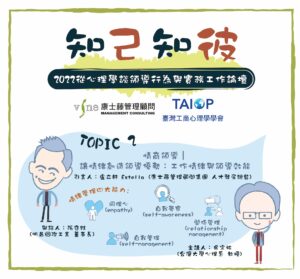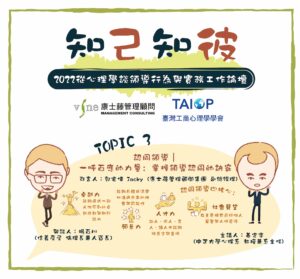
Written by ◎ Bruce, Senior Lecturer of Kong Shiteng Management Consulting Company
directory
For an enterprise or department, the importance of selecting talent lies in the
fact that if the right person is not carefully selected, it will bring extremely high costs and costs
. In addition to the expenses of training and dismissal, it also includes the aftermath costs incurred due to work mistakes, the repair of relationships with customers, and the cost of team rebuilding due to “a grain of rat droppings, a broken pot of porridge”.
Here are five key tips on how to achieve accurate talent selection for interviewers.
Formulate talent specifications, and have targets to determine accuracy
In archery competitions, the accuracy of a competitor is an important indicator of victory or defeat. However, before the score can be evaluated, the target needs to be placed so that the players can compare the accuracy.
Similarly, in order to achieve “accurate” talent selection, it is first necessary to establish the “talent specifications” for recruiting talents, and use them as targets to conduct talent selection and evaluate its accuracy.
When formulating talent specifications, it is important to consider the knowledge, experience, personality traits, or abilities required of the candidate in terms of the responsibilities of the position to deliver the desired results that are professional and valuable.


Effective compliance questions to confirm the compliance of talent specifications
Once you have an arrow target, you have to ask for the laws and skills of archery.
By compliance, we mean that the entire process must be compliant. Just like archery competitions, you must follow the time, distance, order and other rules of the competition, otherwise you may be disqualified or banned for life.
Questions asked during the recruitment process are also subject to the provisions of the law. If you ask questions from the wrong angle and ask questions that you shouldn’t ask, you will face the risk of violating the law.
Secondly, it is necessary to focus on the skills of questioning. Make good use
of open-ended and closed-ended questioning
to guide candidates to provide specific information related to the talent specifications for verification and assessment of their suitability.
Identify the authenticity and reduce the degree of being fooled
The third key trick is the ability to discern the authenticity of the applicant’s answers.
In order to improve the chances of admission, job seekers will often beautify their qualifications and strengths in an attempt to gain the favor of the interviewer, which is a kind of human nature. However, over-optimization may be mixed with some falsehoods, and the interviewer needs to try to distinguish the authenticity.
Eye gaze and body language are the main points of observation.If the interviewee makes subconscious movements such as twinkling eyes, shortness of breath, or covering his mouth when answering a question, he or she needs to further confirm the authenticity of the answer.
It is recommended to use the “follow-up questioning” technique to select the key points from the interviewer’s reply for in-depth questioning. If the applicant’s answers are inconsistent after the questioning, and the head of the bull is not in the mouth of the horse, it may indicate that there is a false response.


Structured processes for precision and professionalism
Constructing a structured recruitment interview process can also improve the effectiveness of accurate talent selection. The structured design includes a pre-selection of questions, a well-designed interview question, and guidance on the interview process.
The advantage of setting the purpose of asking questions in advance is to avoid the legal risks that may result from casual questions. At the same time, it is also possible to evaluate and compare different applicants to select professionals who better meet the talent specifications.
The benefit of the interview process guidelines is to ensure that all interviewers are able to conduct interviews in an orderly and orderly manner. In addition to focusing more on questions and answers, it also gives candidates a sense of institutionalized professionalism.
Use assisted screening tools to improve efficiency and effectiveness
The recruitment process consumes a lot of time and energy from internal supervisors and personnel. The efficiency and effectiveness of recruitment interviews can be improved by adopting
a staged screening approach
and using auxiliary screening tools.
In the first stage, the initial screening can be carried out by means of assessment scales, examinations, etc., according to the project of talent specifications, and some organizations choose to conduct the initial review through telephone or online interviews. At the same time, the use of AI technology to assist in resume and talent selection is also a trend.
Candidates who enter the second phase are screened for further in-depth recruitment interviews. The direction of the questions in the second stage
can continue the content learned during the initial screening, avoid repeated questions, and strengthen the connection between the front and back
.

Continue to refine the selection of talents, and exercise the discerning eye to recognize the hero
As the saying goes, “Knowing a person, knowing the face, not knowing the heart” means that it is difficult to truly understand people.
In practice, this is true. It is not easy to get a comprehensive understanding of a candidate’s abilities and details in a one- to two-hour recruitment interview. Even experienced recruiters can sometimes make mistakes in their selection.
Therefore, accurate selection is a
management art that needs to be continuously improved
. By applying the above five key know-how, continuously improving the system, process and tools, coupled with continuous discerning training, we will be able to reach a higher level on the road of accurate talent selection.

Mr. Bruce
has been working in the field of human resources for nearly 20 years, assisting enterprises in establishing human resources systems and developing talent cultivation mechanisms, and is good at integrating multiple teaching materials and tools, customizing training models that meet the needs of enterprises and transforming them into materials that are easy for students to absorb and apply, so as to improve learning efficiency and effectiveness. In addition, based on years of consulting and counseling experience in talent selection, education, employment and retention, students can be guided and exemplified according to the theme, with a humorous and warm teaching style, to create a pleasant and interactive learning atmosphere, so that students can deeply feel the vitality of the teaching experience, and stimulate positive and continuous learning momentum.
Related columns





You must be logged in to post a comment.